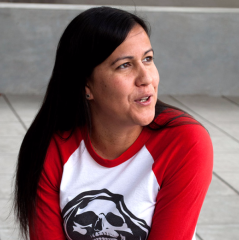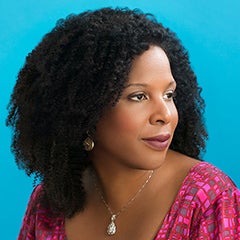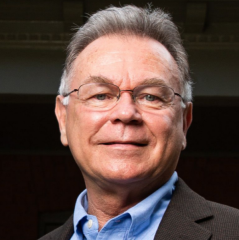Two Arizona State University professors and a Sun Devil alum are among 50 writers who have had their literary works chosen to be part of the 2024 National Endowment of the Arts Big Read program.
ASU Regents Professor Alberto Ríos, English Professor Natalie Diaz and alum Tayari Jones have joined distinguished writers such as Ray Bradbury, Jack London, Toni Morrison and Amy Tan in the program, which provides financial support to selected nonprofit organizations around the country so they can host communitywide reading events.
Organizations apply for funding through a grants program, and each community that receives a grant — the grants range from $5,000 to $20,000 — hosts a Big Read author for an event such as a book fair, a reading, writing workshops, etc.
(The grant process for 2024 is ongoing, so Ríos, Diaz and Jones have yet to be contacted by communities.)
“To me, the Big Read is really the gold standard of community reads because it defines community so broadly,” said Jones, who graduated from ASU in 2000 with a Master of Fine Arts in creative writing and whose book, “Silver Sparrow,” already was part of a Big Read event in 2016 in Peoria, Illinois. “If a city or a town chooses this book, this book is for everyone. There are no boundaries to sharing this story. And that is really what literature does. It brings us together around a common story, and we share our opinions, and we share our experiences, and we experience vicariously.”
ASU News talked to Jones, Ríos and Diaz about their works and the honor of being chosen as part of the Big Read Program.

Natalie Diaz
Natalie Diaz: "Postcolonial Love Poem"
Question: What does it mean for you to have your book of poems included in the program?
Answer: I’m lucky to be part of such a wonderful program. NEA Big Reads works so hard to put books in the hands of so many different communities, some of whom are often overlooked or forgotten, or who don’t have funding to create public events around books. These grants also reward art-makers, by giving them funding to support their incredible imaginations and the care they have for books.
Q: Can you give me an overview of your book, "Postcolonial Love Poem"?
A: This is the book I needed to write, a language that allows me to exist fully and abundantly, in wonder and imagination, as a physical body who is of consequence to the world, a small momentum in a larger tradition of story that connects us all to the land and water. The book imagines everybody as the body of the beloved — rivers, deserts, lovers, family, enemies, strangers. It uses light as a way of moving and touching and beholding this beautiful world, even in its pains and violences. It is a group of poems that lets me be more than a victim of colonialism and allows me to be a part of what this world might become of love and dream and tenderness.
Q: Why do you think the Big Read program is important?
A: NEA Big Read elevates story as a main connector of what makes us human. It creates events across diverse communities and centers many diverse perspectives that help the books live in ways the writer might never have imagined, as all good stories do.

Photo of Tayari Jones by Beowulf Sheehan
Tayari Jones: "Silver Sparrow"
Q: You were part of a Big Read event in 2016. What was that like?
A: That was when I really got to see the reach of the program, because the idea of the Big Read is to get whole communities organized around a single book. One of the things they did in Peoria was that they put copies of the book in food boxes at the food pantry where I did the event. It just showed me how people want to read. People enjoy stories no matter who they are.
Q: Your book is about two girls coming of age, right?
A: It’s the story of two girls, Dana and Chaurisse. They have the same father, but they have different mothers. They’re the same age because, as the first line of the novel says, “My father, James Witherspoon, is a bigamist.” It’s about the man, his two daughters and it’s about class. It’s about legitimacy and what does that mean? And it’s really about mothers and daughters.
Q: With this program, the NEA is basically encouraging reading. Is that how you see it?
A: Not only does it encourage reading, but by having the imprimatur of the NEA, it says, “Hey, this is a book you can bring into your schools. This is a book you can bring into your communities.” It’s almost like the NEA has vetted these books and has said they’re officially stories of the American experience.

Alberto Ríos
Alberto Rios: "A Small Story About the Sky"
Q: What is your poem about?
A: It’s all about community. It’s about Arizona. It’s about the desert. There’s a lot of eco poetics in it. A lot of cultural references. The poem was kind of prompted by the deaths of the Yarnell firefightersNineteen wildland firefighters with the Granite Mountain Hotshots crew were killed on June 30, 2013. in Arizona. The poem is not about them specifically, but it is about fire and the sky. It sort of comes out of that Arizona experience of grief that we all went through when those firefighters died. My brother was a firefighter — he’s retired now — so it hit slightly closer to home. I could have written about the firefighters, and that would have gotten a lot of attention, but I wanted to find something new that’s right in front of us. I think that’s the job of poetry, to show us this normalized thing in a brand new way and make us feel something as a result of that. I think art’s job in so many ways is to move us from where we’re standing to what we’re feeling.
Q: Why is this program effective in bringing people together?
A: I think it becomes very, very specific to the community. They’re looking for particular kinds of works that are, if not aimed, certainly play a part in community building, are about communities and speak to that familial feeling, what I call the kitchen table. That’s what they’re shooting for, and I think I’m lucky to have my work reflect that.
Q: You’ve been part of the program before. What was that experience like?
A: I had one community where they took their poems, and they had a group of painters. This was their idea, which was brilliant. They had a group of painters who painted their version of these different poems that were read. I thought, “What a wonderful way to think about it." It wasn’t just done with writing.
More Arts, humanities and education
ASU FIDM students to see their designs on the runway at Uncertainty Fashion Showcase
Nola Hill is perfecting every stitch of her fashion design collection, which she started conceptualizing last summer.She is among 30 ASU FIDM fashion design students who have been working late into…

ASU+GSV Summit brings experts together to discuss innovation in education
This week, Arizona State University President Michael Crow and other university leadership joined education and learning experts from around the globe at the ASU+GSV education technology summit in…

ASU professor's project helps students learn complex topics
One of Arizona State University’s top professors is using her signature research project to improve how college students learn science, technology, engineering, math and medicine.Micki Chi, who is a…


